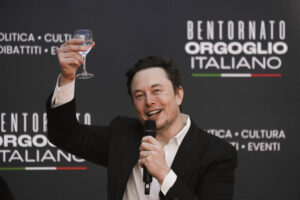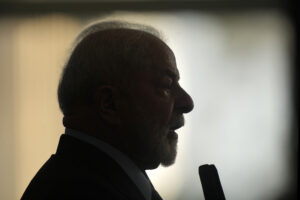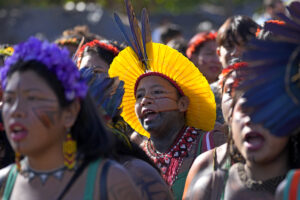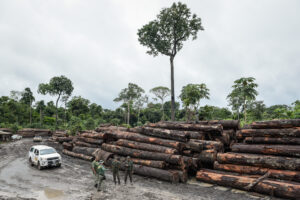The People’s Game Part One: When Soccer Conquered the World
The first in a three-part series examines the history of international soccer as it informs the World Cup, which begins Thursday. Aspiring young soccer players continue with their practice during a dust storm in Jammu, India. Soccer fans around the world are gearing up to watch the Soccer World Cup that begins in Brazil Thursday. AP Photo/Channi Anand
Aspiring young soccer players continue with their practice during a dust storm in Jammu, India. Soccer fans around the world are gearing up to watch the Soccer World Cup that begins in Brazil Thursday. AP Photo/Channi Anand
By Alan Minsky and Meleiza Figueroa
The quadrennial men’s World Cup soccer tournament is the most popular, and most fervently followed, spectacle in the world. Not surprisingly then, the games are the source of parallel political contests — witness the street demonstrations in Brazil and the competition between nations to host the event. Indeed, the World Cup is so grand, its scale so vast, that it merits serious social, economic and political analysis.
The following is the first installment of a three-part series on the 2014 World Cup in Brazil, which begins Thursday. The first essay is on the history of soccer, both on and off the field, as it informs this year’s Cup. Read part two here. Part three can be read here.
Global soccer 2014 through the prism of history
Across most of the globe, soccer has long been associated with the working class and the poor. There are exceptions, such as in the United States, where, outside of immigrant communities, Volvo-driving suburbanites define the sport. Soccer as part of working-class culture has been with us since its early growth in industrializing England in the 19th century — and the archetype extends today to barefoot youth playing in tropical slums. Yet, just as the masses have the greatest passion for the game, the profits have largely flowed to the 1 percent. Thus, class conflict is inscribed across soccer’s entire history.
Before elaborating on big-money spectacle soccer 21st century style, a few words about the sport’s poetics. Soccer is a source of joy and transcendent pleasure. Of course, one of the few things in the world more popular than watching soccer is playing it. All you need is a ball, gravity and a slice of open space. Indeed, the only participant sport more popular than organized soccer is the pickup game. The vast majority of the billions who will watch the World Cup have played the game, which is one element of the spectacle’s appeal. The billions are watching the world’s greatest practitioners of a craft they themselves plied.
Soccer as a spectator sport brings a unique set of joys that contrast with other team sports, and these have become a common shared language for contemporary humanity. As opposed to baseball, cricket, basketball and American football, soccer never stops: two halves, 45 minutes straight, no commercial interruptions. In the ebb and flow of almost every game, in a relatively close competition, any team will string together a series of attractive passes, make astonishing runs and threaten the opponent’s goal, lifting the spirits of every partisan. Your team may lose, but every game offers this analog for when everything is clicking in life: You’re one with your muse; you smile and he or she smiles back. This aspect of the game is important if we’re to understand the ever-increasing popularity of the sport. Soccer historians rhapsodize about the glorious creativity players displayed in the soccer of yore, and bemoan the evolution of the game toward more constraint. Yes, we’re in an era of defensive tactics when the final outcome is prioritized over beauty; but no amount of cagey gamesmanship can suffocate the flow of the game across midfield, can eliminate this oxygen that fills the spirit, even if goals become less frequent.
Of course, the infrequency of goals adds its own pleasures. The underdog will hunker down to defend, hold out, all hands on deck, counting down the seconds, with nail-biting tension, feeling the beauty of solidarity, believing against all received wisdom that “you” can slay a Spain or Brazil. Fans of all teams strive for their side to hit their rhythm, control the ball, move it forward with ingenuity and astonishing skill, break down a world-class defense, and produce that most orgasmic of all sporting moments: the soccer goal, pure rhapsodic joy shared with millions.
Coming back to reality, outside the heavenly cocoon of the game itself, elite global soccer in the 21st century is, like the rest of the world, dominated by the seemingly unlimited resources of global capitalism. In between games, rumors of huge money deals dominate the international soccer discourse. Top players and coaches climb the ladder and join the most elite clubs (Real Madrid, Manchester United, Barcelona, et al.) that buy the best talent from around the world to ensure their continued domination. This exclusive group of elite teams remains relatively stable — the only time a new member crashes the party is when some billionaire oligarch decides to match or raise the stakes, as has happened recently with Manchester City, Paris St. Germain and Chelsea. This, in effect, creates astonishing inflation in the upper-most echelons of the sport, as transfer fees reach mind-boggling proportions. The domination of the club sport by these super-elite European teams strips the best talent from elsewhere in the world, replicating a core-and-periphery structure that itself parallels global capitalism. As such, the TV broadcasts of the top European leagues now reach everywhere on the planet. Corporate globalization, soccer style.
The World Cup tournament stands in a paradoxical relationship to the club soccer system. On the one hand, FIFA, which puts on the World Cup, is in harmony with the logic of neoliberal 21st century global capitalism, imposing demands on host nations analogous to those imposed by the IMF and World Bank. And yet, in spite of FIFA and its staggering level of corruption, the World Cup itself is a thorn in the side of those elite corporations that are the top clubs. The greatest passion of both the fans and the players is reserved for this tournament, even though the direct payouts are miniscule compared with club soccer. Real Madrid, Barcelona and the oligarchic owners of other European clubs can buy the services of the players, but they can’t buy their hearts.
In this regard, soccer is unique. In no other major club sport is the international competition the main course, for which the teams are not built by the purchasing power of big money, but by the nations and regions where the players come from. Although there is a reactionary, ugly, jingoistic logic of playing for the homeland, there is something archetypically appealing about playing alongside others from your region, often with other stars you grew up with — especially when it’s a slap in the face to the logic of global finance. Club soccer is the richest, most popular club sport in the world but it falls far short in popularity to a tournament organized around national teams, not oligarchic money.
Yet we’ve seen this very tension influence the World Cup tournament itself. It’s our sense that over the past decade, the proliferation of yellow and red cards in international tournaments is in response to pressure from the clubs that don’t want to see their elite commodities — the players — harmed in a tournament. This is a real problem for the clubs because the tournament remains more important to the players than the club competition, and they will push themselves every way possible to participate and shine. For superstars such as Cristiano Ronaldo and Leo Messi, or any slightly lesser celebrity who might emerge in the next few weeks as the tournament’s star or goat, the World Cup remains by far the defining event. As great as Ronaldo and Messi have been in club play, their standing in the history of soccer will be defined by their performances in the World Cup. Entry into the all-time pantheon requires greatness on the greatest stage, and in soccer that’s not the domain of private ownership.
Take that, oligarchs! Notch one for the people’s game.
The proliferation of referee whistles is just one factor among many that have conspired to slow down recent World Cup games and sap them of beauty. Another contributing factor is that the players care so much — in careers that can end in an instant and last only two, maybe three, World Cup cycles — that the magnitude of the moment induces a tentative approach, as teams strive to stay alive for a shot at the grand prize. This tendency is compounded by coaching innovations that have skewed conservative. “Control and contain” is the order of the day. The heralded Barcelona/Spain “tiki-taka” style puts a priority on playing keep-away as opposed to majesty. Indeed, Spain won in 2010 scoring three fewer goals than any previous champion, even though it played three more games than some of the early World Cup winners.
One thing we will hear much of in the coming weeks is the comparison of 2014 with previous World Cups. Will the measure of the tournament be on par with the great years such as 1954, 1970 or 1982, or will it be too conservative like 1990? The play on the field in 1998 and 2006 got passing grades, less so in 2002 and 2010 — but it’s been a while since it has reached mythological heights. The legends of previous World Cups are shared culture in the core soccer-playing countries, each tournament adding to the lore; the greatest moments cherished by millions and branded with meaning comparable to literature/art/religious ecstasy/romantic love, spoken about in hushed tones of reverence. The fans in the newer soccer nations will gain fluency in this vernacular over the next few weeks, as they hear tales of Diegolito, England ’66, Zidane in glory and disgrace — all working-class heroes canonized by the people. Who will make his mark on this World Cup and enter the pantheon in the most competitive sport in the world in which the field is level and everybody has an equal chance? And will the interpretation of history and its newest entries be determined by the multinational corporate image machine, or will new forms of communication prove uncontainable, giving voice once again to the people?
For no team does this hold as much relevance as for the host itself. Brazil will be compared against the great teams of its past: those of Pele, Garrincha and Carlos Alberto that dazzled the world, winning three out of four World Cups from 1958 to 1970; the 1982 squad that played so beautifully, so fluidly, but went down in legendary defeat to Italy; and, of course, the teams of Ronaldo, Ronaldinho and Rivaldo, which challenged gloriously in 1998 and won in 2002. This year’s Brazil team will have the pressure not only of winning the Cup, but of playing beautifully, and those judging will include the legions of protesters who have already spilled onto the streets.
Part two of this series will examine the circumstances and controversy surrounding the 2014 tournament in Brazil.
Meleiza Figueroa is a doctoral candidate in geography at UC Berkeley who is doing her dissertation research in Brazil. Alan Minsky is program director of KPFK Radio in Los Angeles, and a frequent contributor to Truthdig. They are the co-producers of “The People’s Game” radio show, which can be listened to live each Wednesday during the World Cup at kpfk.org. Show archives and daily podcasts will be available online at thepeoplesgame.org.
Part two of this series, about Brazil and the protests that have sprung up around its World Cup, is now available. Read it here.
Your support matters…Independent journalism is under threat and overshadowed by heavily funded mainstream media.
You can help level the playing field. Become a member.
Your tax-deductible contribution keeps us digging beneath the headlines to give you thought-provoking, investigative reporting and analysis that unearths what's really happening- without compromise.
Give today to support our courageous, independent journalists.






You need to be a supporter to comment.
There are currently no responses to this article.
Be the first to respond.